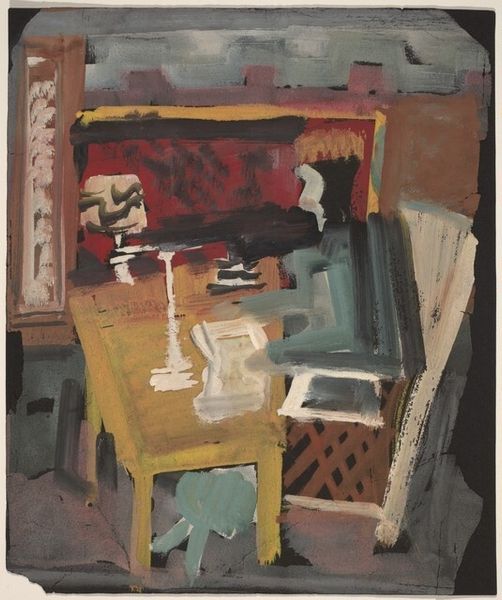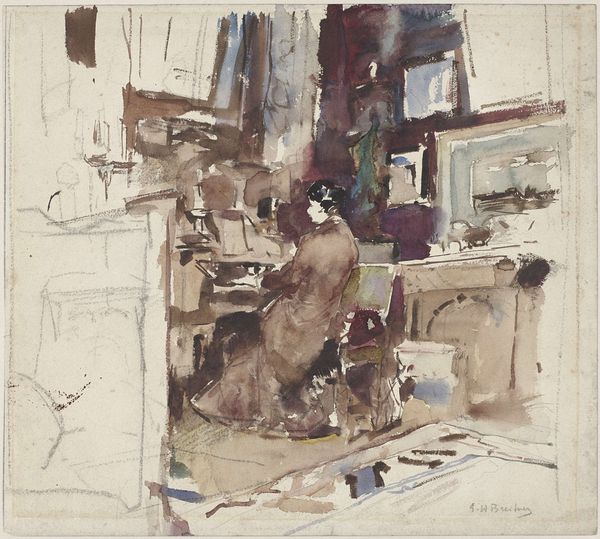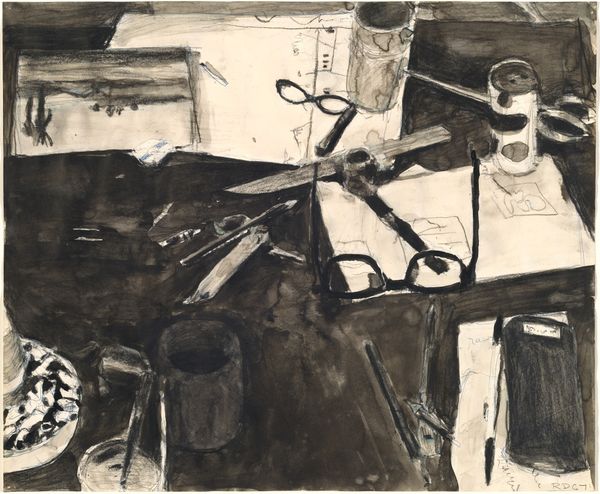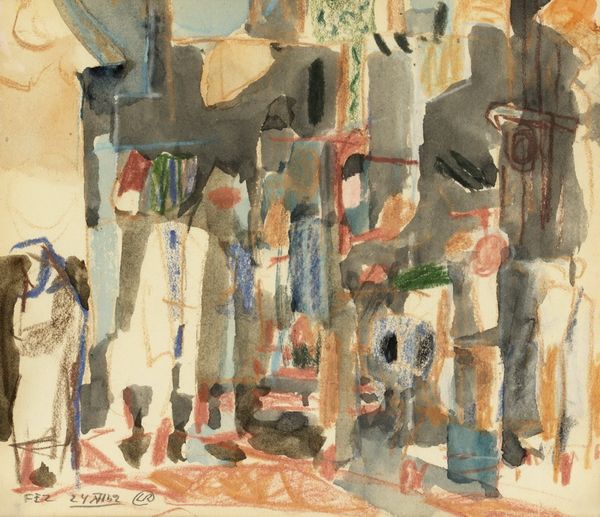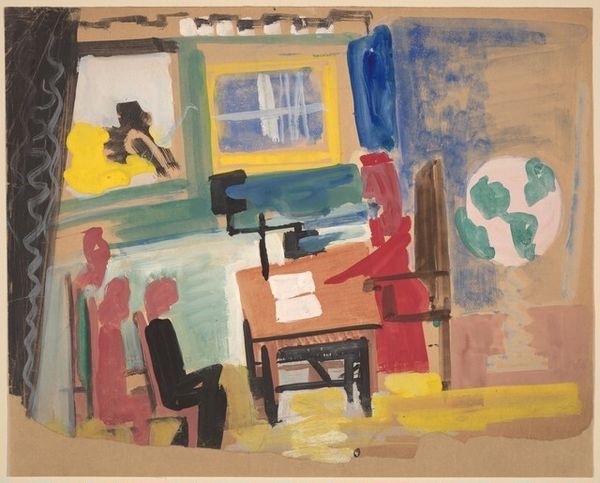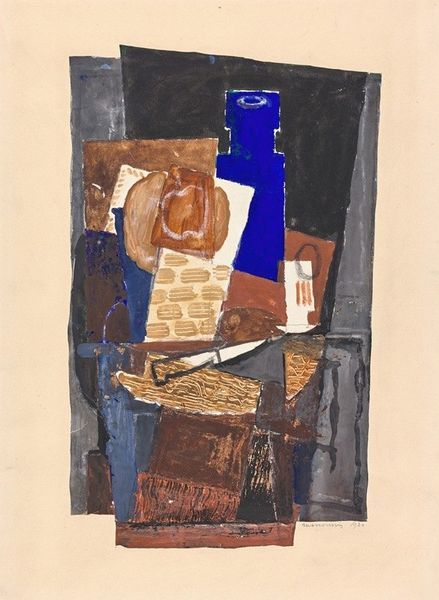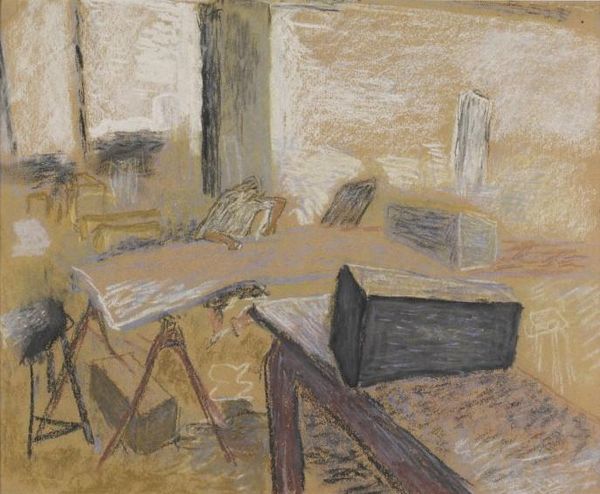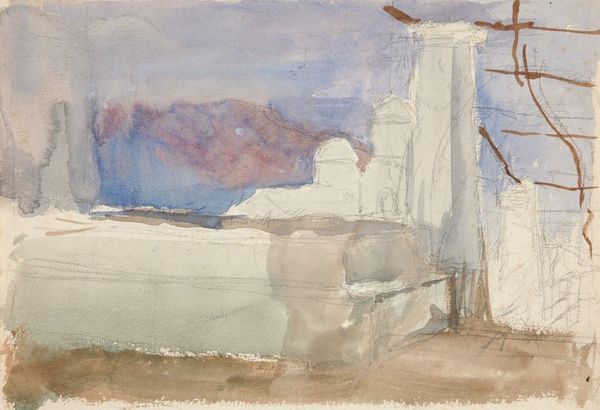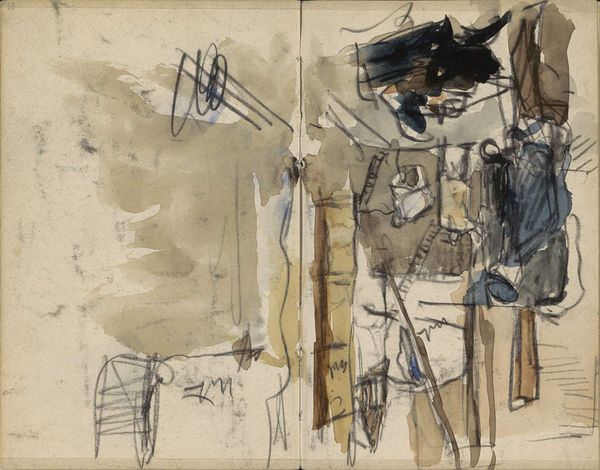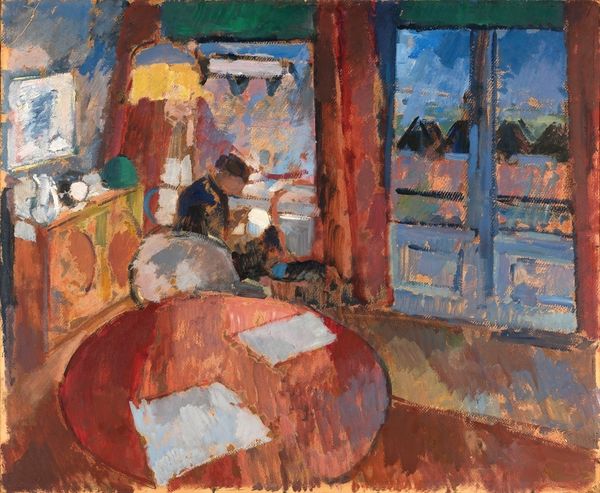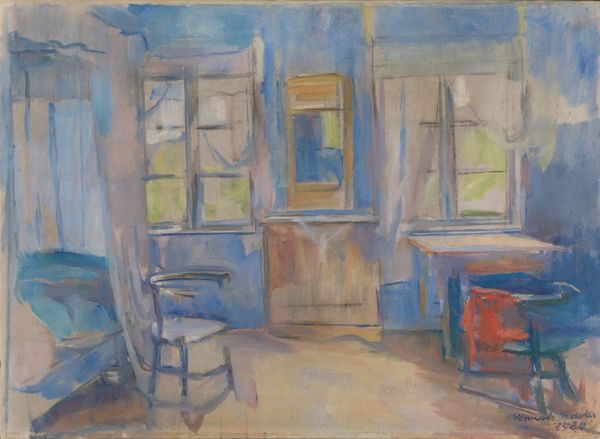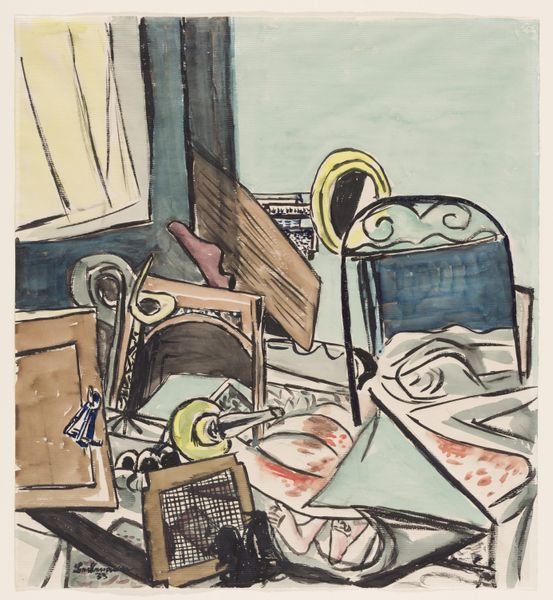
painting, watercolor
#
portrait
#
narrative-art
#
painting
#
german-expressionism
#
figuration
#
watercolor
#
expressionism
#
watercolor
Copyright: Public Domain: Artvee
Charles Demuth made this watercolor painting, titled "The Death of Countess Geschwitz," likely in the 1920s. Demuth worked in what we might call traditional materials – paper, pigment, water – but he was interested in how these could evoke very modern ideas. Take the way he deploys the medium. Notice how fluid the washes of color are, almost as if they're bleeding into one another. The effect is a world dissolving, breaking down. It's a perfect visual analogue for the social disintegration that many artists felt keenly during the interwar period. More specifically, Demuth was a gay man, interested in the depiction of queer subjects. The Countess Geschwitz, who dies at the conclusion of Alban Berg's opera "Lulu," gives herself to the heroine in a final act of devotion. Demuth pictures this moment as tragic, though also strangely triumphant. Demuth asks us to remember that even an apparently straightforward painting can contain worlds of meaning, once we consider the materials, the making, and the context from which it emerged.
Comments
No comments
Be the first to comment and join the conversation on the ultimate creative platform.
